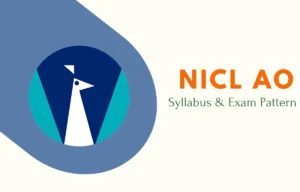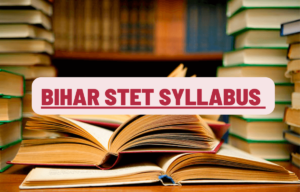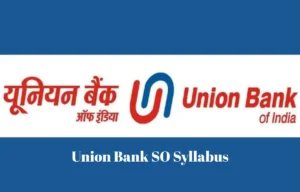Table of Contents
The Board of Secondary Education (BSE) of Odisha is organizing the Odisha Teacher Eligibility Test (OTET) 2024. This OTET Exam 2024 is scheduled to be held on 17th August 2024 in offline mode. To pass this exam, candidates need to know what to study and how to prepare effectively. Understanding the OTET Syllabus 2024 and exam pattern is essential for creating a good study plan. With proper preparation, candidates can achieve good scores, increasing their chances of success in the exam.
OTET Syllabus and Exam Pattern 2024
The candidates who are planning to appear in the OTET Exam 2024 must go with the new exam pattern and start preparing accordingly. This will help them know which subjects are more important and where they need to focus more. It’s important to note that the exam consists of two papers: Paper 1 (150 marks) and Paper 2 (150 marks). Additionally, there is no negative marking for wrong answers in this exam, allowing candidates to answer freely without fear of deductions.
| OTET Syllabus and Exam Pattern 2024 – Overview | |
| Conducting Body | Board of Secondary Education (BSE), Odisha |
| Exam Name | Odisha Teacher Eligibility Test 2024 (OTET 2024) |
| Level Of Exam | State Level |
| Exam Mode | Offline |
| OTET Exam Date 2024 | 17th August 2024 |
| Exam Language | Odia and English |
| Number of Papers | Paper 1 (150 marks) Paper 2 (150 marks) |
| Number of Questions | 150 questions in each paper |
| Negative Marking | Nil |
| Official Website | www.bseodisha.ac.in |
OTET Paper 1 Exam Pattern 2024
OTET Paper 1 Exam 2024 includes subjects such as Child Development & Pedagogy, Language-I, Language-II, Mathematics, and Environmental Studies, making a total of 150 marks. Candidates must choose one language from Odia, Hindi, Telugu, Urdu, or Bengali for Language-I, whereas Language-II will be English for all candidates. Candidates need to understand the syllabus thoroughly to effectively prepare for each subject.
| OTET Paper 1 Exam Pattern 2024 | |||
| Subject | Number of Questions | Marks | Duration |
| Child Development & Pedagogy | 30 | 30 | 2.5 Hours |
| Language-I (Odia/ Urdu/Hindi/ Telugu/ Bengali) | 30 | 30 | |
| Language-II (English) | 30 | 30 | |
| Mathematics | 30 | 30 | |
| Environment Studies | 30 | 30 | |
| Total | 150 | 150 | 2.5 Hours |
OTET Paper 1 Syllabus 2024
Candidates planning to take the OTET Exam must thoroughly understand its syllabus topic wise to prepare effectively. OTET Paper 1 Syllabus covers various subjects, and the questions are based on the state-prescribed syllabus for classes I to V. However, the difficulty level and connections between topics may extend up to the secondary stage. Understanding these aspects of the syllabus is crucial for candidates aiming to perform well in the examination.
Section A: Child Development & Pedagogy
Unit 1: Understanding Child Development during Childhood (focus on children at primary level)
- Concept, principles and stages of child development
- Characteristics of physical, cognitive, social, emotional and moral development in childhood
- Influence of heredity and environment in understanding the child
Unit 2: Understanding Learning Process and Learners
- Learning – concept, nature and individual differences in learning
- Understanding how child learns – learning through observation, limitation
- Understanding low child learns – various methods of learning
- Basic conditions of learning and promotion of learning through motivation, classroom learning environment and teacher behaviour
- Development of creative thinking
Unit 3: Concept of Inclusive Education and Understanding Children with special
needs
- Concept of inclusive education
- Addressing the needs of diverse group of learning in inclusive classroom (CWSN, girls, SC / ST)
- Addressing the talented, creative learning
Unit 4: Approaches to teaching and learning
- Teacher-centred, learner-centred and learning-centred approach
- Competency-based and activity-based approach
- TLM – its importance, use and preparation for classroom transaction
- Teaching competency to handle mono-grade and multi-grade situation
Unit 5: Assessment
- Continuous and comprehensive assessment
- Purpose of assessment
- Assessing scholastic and other scholastic areas
- Sharing of assessment outcomes and follow up
Section B: Language-I (Odia/ Urdu/Hindi/ Telugu/ Bengali)
Unit 1: Learning Odia / Urdu / Hindi / Telugu / Bengali at elementary level
- Aims and objectives of teaching Odia / Urdu / Hindi / Telugu / Bengali as
mother tongue - Principles of language teaching
- Acquisition of four-fold language skills in Odia / Urdu / Hindi / Telugu /Bengali viz., listening, speaking, reading and writing
- Interdependence of four language skills
- Objectives and strategies of transacting integrated text for the beginners
Unit 2: Teaching, Reading and Writing Skills
- Technique of developing intensive and extensive reading skills
- Teaching-learning composition and creative writing
- Critical perspective on the role of grammar in learning language for communicating ideas in written form
- Challenges of teaching language in a diverse classroom, language difficulties and errors
Unit 3: Assessment of learning Odia / Urdu / Hindi / Telugu / Bengali
- Assessment language comprehensive and proficiency : speaking, listening, reading, writing – construction of different types of test items
- Remedial teaching
Unit 4: Language items
- Part of speech – Noun, Pronoun, Verb, Adverb, Adjectives, Conjunction
- Formation of words – using prefix and suffix
- Synonyms and antonyms
- Phrases and idioms
Unit 5: Language Comprehension
- Reading two unseen passages – one passage from prose and one poem with questions on comprehension, drama, inference, grammar and verbal ability (prose passage may be literary, scientific, narrative or discursive)
Section C: Language-II (English)
Unit 1: Learning English at the Elementary Level
- Importance of learning English
- Objectives of learning English (in terms of content and competence specifications)
Unit 2: Language Learning
- Principles of language teaching
- Challenges of teaching language in a diverse classroom
Unit 3: Skills in learning English
- Four-fold basic skills of learning viz., listening, speaking, reading and writing: interdependence of skills
- Techniques and activities for developing listening and speaking skills (recitation, story telling, dialogue)
- Development of reading skills : reading for comprehension, techniques and strategies for teaching, reading (phonic, alphabet, word, sentence and story)
- Development of writing skill – teaching composition
Unit 4: Assessment of English
- Assessing language comprehension and proficiency : listening, speaking,
reading, writing
Unit 5: Comprehension
- Two unseen prose passage (discursive or literary or narrative or scientific) with questions on comprehension, grammar and verbal ability
Unit 6: Language items
- Nouns, Adverbs, Verbs, Tense and Time, Preposition, Articles, Adjectives,
Prepositions, Punctuation
Section D: Mathematics
Unit 1: Mathematics Education in Schools
- Nature of Mathematics (exactness, systematic, patterns, preciseness)
- Aims and objectives of teaching Mathematics
- Specific objectives of teaching Mathematics
Unit 2: Methods and Approaches to Teaching-Learning Mathematics
- Methods : Inductive, deductive, analysis, synthesis, play-way
- Approaches : Constructivist and Activity-based
Unit 3: Assessment in Mathematics
- Assessment in Mathematics
- Formal and informal assessment
- Different types of test items
- Planning for remedial and enrichment programme in Mathematics
Unit 4: Number System and Operation in Numbers
- Number system (natural, whole, rational, real)
- Fundamental operation on numbers
- Fractional numbers and decimals – operations in fractional numbers and decimals
- Factors and multiples – HCF and LCM
- Percentage and its application
Unit 5: Measurement
- Measurement of length, weight, capacity
- Measurement of area and perimeter of rectangle and square
- Measurement of time (concept of am, pm and time interval)
Unit 6: Shapes and spatial Relationship
- Basic geometrical concepts (point, line segment, ray, straight line, angles)
- Geometry of triangles, quadrilaterals and circles
- Symmetry
- Geometrical slides (cube, cuboid, sphere, cylinder cone)
Unit 7: Data Handling and Patterns
- Pictography, bar graph, histogram, pie chart
- Interpretation of these graphs
- Patterns in numbers and figures
Section E: Environment Studies
Unit 1: Concept
- Concept and Significance
- Integration of Science and Social Science
- Aims and objectives of teaching and learning EVS
Unit 2: Methods and Approaches
- Basic principles of teaching EVS
- Methods : Survey, Practical Work, discussion, observation, project
- Approaches : Activity-based, theme-based
Unit 3: Evaluation in EVS
- Tools and techniques for evaluation learning in EVS
- Diagnostic assessment in EVS
Unit 4: Governance
- Local-self, Government – State and Central
- Judiciary
Unit 5: Physical Features of Odisha and India
- Landscape
- Climate
- Natural resources
- Agriculture and industry
Unit 6: History of Freedom Struggle in India and Odisha
Unit 7: Health and Diseases
- Nutritional, elements, balanced diet
- Nutritional, deficiency and diseases
- Waste materials and disposal
- First-aid
Unit 8: Internal Systems of Human Body
- Respiratory, circulatory, digestive and excretory system – structure and parts of plant – structure and function
Unit 9: Matter, Force and Energy
- Matter and its properties
- Earth and sky, effect of rotation and revolution of earth
- Work and energy
OTET Paper 2 Exam Pattern 2024
In the OTET 2024 Paper 2 exam format, candidates will encounter a total of 150 multiple-choice questions. The exam duration is set at 2.5 hours. Candidates have the option to choose between two sections: A) Mathematics & Science or B) Social Studies. Section A consists of 60 questions in total, with 30 questions each from Mathematics and Science. Section B also comprises 60 questions, divided equally between History and Political Science, and Geography, with 30 questions from each.
| OTET Paper 2 Exam Pattern 2024 | |||
| Subject | Number of Questions | Marks | Duration |
| Child Development & Pedagogy | 30 | 30 | 2.5 Hours |
| Language-I (Odia/ Urdu/ Hindi/ Telugu/ Bengali) | 30 | 30 | |
| Language II (English) | 30 | 30 | |
| Optional (Either A or B) | |||
| A. Mathematics & Science | 60 | 60 | |
| B. Social Studies | 60 | 60 | |
| Total | 150 | 150 | 2.5 Hours |
OTET Paper 2 Syllabus 2024
The questions in Paper 2 of the OTET will be drawn from the state-prescribed syllabus for Class VI to VIII. However, their complexity and connections may extend up to the senior secondary or higher secondary level. This means that candidates should be prepared for questions that require knowledge and understanding beyond the middle school curriculum, encompassing concepts typically covered in senior secondary or +2 stages of education.
Section A: Child Development & Pedagogy
Unit 1: Child Development (Focus on Upper Primary School Children)
- Features of Physical, Cognitive, Social, Emotional & Moral development during pre-adolescence and adolescence
- Effect of Heredity and Environment on development
- Needs and problems of adolescents
- Individual differences among learners
Unit 2: Learning
- Learning as meaning making knowledge and construction
- How children learn – observation, initiation, trial, error, experience
- Learning as social activity
- Rote learning and meaningful learning
- Factors affecting learning
- Strategies for promoting lessons
- Addressing learners from diverse background including disadvantaged and deprived
- Addressing the needs of children with learning difficulties and impairment
- Addressing the talented, creative and specially abled learners
Unit 3: Curriculum Teaching – Learning Approaches and Evaluation
- Teacher-centred, learner centred and learning-centred approaches
- Principles of curriculum organization
- Teaching learning aids
- Continuous comprehensive assessment of learning, planning and designing achievement tests, rating scale, check list
- Test reliability and validity
- Date representation – mean, mode and median and standard deviation
Section B: Language-I (Odia/ Urdu/ Hindi/ Telugu/ Bengali)
Unit 1: Learning Odia / Urdu / Hindi / Telugu / Bengali at Upper Primary Level
- Aims and objectives of learning Odia / Urdu / Hindi / Telugu / Bengali as first language
- Principles of teaching mother tongue
- Development of language skills (speaking, reading, writing and listening)
Unit 2: Teaching Language
- Intensive and Extensive reading skills at upper primary level
- Teaching of non-detailed and detailed texts (prose, poetry)
- Teaching of composition and creative writing
- Teaching of grammar
- Challenges of teaching Odia / Urdu / Hindi / Telugu / Bengali in multi-lingual context
Unit 3: Assessment of Language
- Assessment of learning Odia / Urdu / Hindi / Telugu / Bengali language – listening, speaking, reading and writing
- Planning and designing achievement tests and other tools for assessment
Unit 4: Elements of Odia / Urdu / Hindi / Telugu / Bengali Language
- Comprehension of two unseen passages (one from prose / drama and other from poem) with test items on comprehension, vocabulary and grammar.
Unit 5: Language Items
- Parts of speech (noun, pronoun, verb, adverb, adjectives, conjunction)
- Formation of words (pre-fix and suffix)
- Vocabulary (spelling and meaning of synonym and antonym)
- Phrases and idioms
Unit 6: Contribution of famous literates for development of Odia / Urdu / Hindi / Telugu / Bengali language
- Odia
- Urdu
- Hindi
- Bengali
- Telugu
Section C: Language II (English)
Unit 1: Learning English at Upper Primary Level
- Importance of learning English
- Objective of learning English
Unit 2: Development of English Language Skills
- Basic skills of language (listening, speaking, reading, writing), interdependence of skills
- Teaching of prose, poetry and composition
- Teaching of creative writing
- Principles of language teaching
- Challenges of teaching English as second language at upper primary level
Unit 3: Assessment of learning English Language
- Assessment of comprehension and language skills (listening, speaking, reading and writing)
Unit 4: Comprehension
- Two unseen passages (one from prose / drama and another from poem) with questions on comprehension, grammar)
Unit 5: Language Items
- Parts of speech, tense, voice change and change of narration, use of article, use of punctuation mark
- Vocabulary – meaning and spelling
Section D: Mathematics & Science
Unit 1: Mathematics at Upper Primary Stage
- Nature of Mathematics – logical, systematic, abstractions, pattern, mathematical language
- Aims and objectives of teaching Mathematics
- Specific objectives of teaching Mathematics
Unit 2: Methods and Approaches to Teaching-Learning Mathematics
- Methods : induction, deduction, analysis and synthesis
- Approaches : Constructivist and activity-based
Unit 3: Evaluation in Mathematics
- Formal and informal evaluation
- Error analysis
- Remedial and enrichment programmes
Unit 4: Number System
- Number System (focus on real and rational numbers)
- Properties in different number systems
Unit 5: Algebra
- Basic concepts : terms, co-efficient, powers
- Algebraic equations and their applications (with one variable)
- Polynomials – operations in polynomials
- Laws of indices
- Identities
Unit 6: Commercial Arithmetic
- Percentage and its application (profit and loss, simple and compound, interest, banking, rebate)
- Ratio and proportion
- Variation and its application
- Square, square root, cube, cube root of natural numbers
Unit 7: Shapes and Spatial Relationship
- Triangles and Quadrilaterals
- Angles, complementary and supplementary angles, opposite angles, exterior angles of the triangle
- Angle sum property
- Parallel lines and properties relating to parallel lines
- Congruency and similarities
- Menstruations (area and circumference of circle, higher order problems relating to area of square, triangle, rectangle, parallelogram, trapezium, Pythagorean theorem)
Section E: Social Studies
Unit 1: Aims and Objectives of Teaching Social Studies
- Importance of teaching-learning Social Sciences at upper primary stage
- Aims and objectives of teaching-learning Social Sciences
- Specific objectives of teaching-learning Social Science
Unit 2: Methods and Approaches
- Methods : Survey, field work / trips, project, group work
- Approaches : Activity-based, theme-based
Unit 3: Evaluation in Social Science
- Tools and technique for assessment of learning in Social Science
- Diagnostic assessment and remedial teaching
Unit 4: History and Political Science
- Methods of historical studies, social, economic and political conditions of sultanate, moghul and British period
- Slave, Khiligi, Tughlaq, Lodi Dynasty
- East India Company, British Crown, Impact of British rules, Ancient period, Kharabela, Ashoka
- Soma, Garganga, Surya, fall of Odisha, Odisha under Moghuls
- Nationalist movement in India
- Development of Nationalism and Europe
Unit 5: Political Science
- Indian Constitution
- Human Rights
- Governance at Central, State and Local level
- Political Parties and pressure group
Unit 6: Geography
- Odisha Geography – physical features, climate, agriculture and industry
- Natural resources (land, water, forest and wild animals, minerals)
- Atmosphere, biosphere and hydrosphere
- Earth – crust, internal structure, landscape (hills and mountains, platue, plains, rivers)
- Temperature zones of earth
OTET Syllabus 2024 PDF
Candidates planning to appear for the OTET Exam 2024 should prepare with the help of the syllabus. The official OTET Syllabus 2024 lists topics for each subject that candidates need to understand well. After completing the OTET syllabus, candidates can solve mock tests and improve weak areas after completing the syllabus. Below is the OTET Syllabus PDF Link.








 NICL AO Syllabus and Exam Pattern 2025 f...
NICL AO Syllabus and Exam Pattern 2025 f...
 Bihar STET Syllabus 2025 and Exam Patter...
Bihar STET Syllabus 2025 and Exam Patter...
 Union Bank SO Syllabus 2025 and Exam Pat...
Union Bank SO Syllabus 2025 and Exam Pat...


